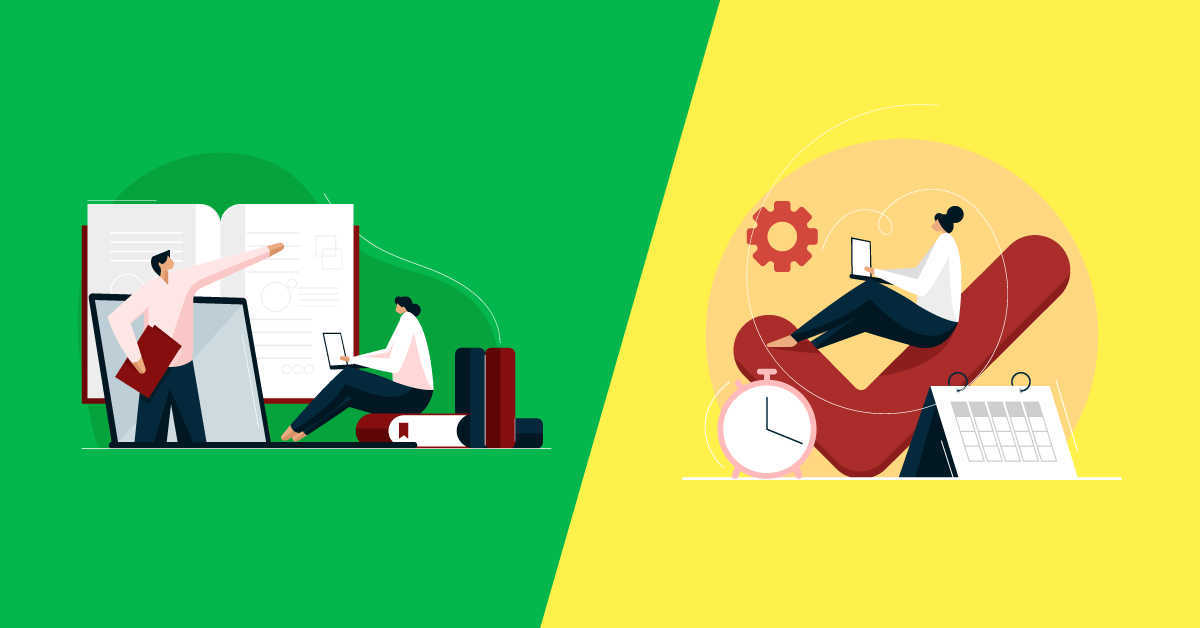
Graphic design is a process of visual communication using elements such as type, space, images and colour. All of these are important in producing eLearning materials, so let’s look at them each in turn.
Content is obviously important, but a large part of the effectiveness of any learning material is the way it’s presented. When your learners are regularly exposed to hundreds of other exciting forms of graphic design in print, on screens and in the street, they won’t pay so much attention to materials that quite simply aren’t that good. But, what is “good”?
If you’ve never had any training in art or design, it may be difficult to appreciate the skill involved in making what often appear to be very simple things.
Take type for example.
Typography involves the design of letters and numbers into consistent groupings, or fonts. Immediately we tend to think of the Roman alphabet (A, B, C) and Arabic numerals (1,2,3) – but these days, typography must also accommodate other lettering systems (Cyrillic, Greek, Arabic and a whole variety of Asian languages), together with other specialized commercial, technical or artistic shape sets.
Commonly used symbols – ticks and crosses, check marks, star shapes and arrows – also have their own font sets, as do the wide variety of emoticons now in common use.
Until barely fifty years ago, these things had hardly changed since Caxton and Gutenberg, and even early computer systems could only handle a few fonts. However, in the last twenty years, the range of possibilities available has exploded, meaning that anything is possible. Sadly, design skills haven’t quite caught up.
Take a look around you. Pick up a newspaper or magazine and open it at a random page. Try to count how many different fonts are being used.
You’ll need some definitions to start with. Size is fairly obvious – some letters are bigger than others. They’re usually measured in points, where 72 points equals one inch.
Body text – the main bulk of text for reading – will usually be around 10 to 12 points, and there will be a hierarchy of headings of larger sizes. Some will probably be in line with the text, dividing it up into recognizable sections or sub-sections. Others will be offset, perhaps in separate boxes or areas of their own, drawing attention to a particular phrase or quotation.
There may be some smaller text alongside pictures or diagrams – these are usually known as captions. However, there will most likely be no more than five or six different font sizes in use on any one page.
Weight is another important consideration. Printers and professional typographers use a whole range of terms, but at their simplest, they’re variants of things like bold, italics, narrow and maybe extra-light. Again, you will only find a few variants on any one page.
Above all, with both size and weight, notice that they are being used consistently. A particular form of text – a caption, or a sub-heading – will almost always be exactly the same size and font, whenever it appears.
The space around it (printers refer to this as “leading” from the old days of lead type), and which is also measured in points will be consistent too.
Another factor is the design of the letters themselves. There are many strange font sets available, but most fonts can be described as either serif or sans serif.

Serifs are the tiny extensions at the ends of strokes in letters – they originated when stonemasons tried to engrave painted brush strokes, and they developed into consistent embellishments.
Serif typefaces, like the variants of Times New Roman used in many newspapers and books are supposed to be easier to read, although the evidence for this is not conclusive.
Conversely, most text designed for reading on a screen will be sans serif, often a variant of Arial or Helvetica. But, small differences between fonts are important.
The Arial font from MS Word may look good in print, but it doesn’t look at its best on screen. Fonts like Tahoma and Verdana, although very similar, are sized and spaced better for reading online. And some newer fonts like Lucinda or Calibri are even more balanced.
What does all this have to do with eLearning? Well, the most important thing is to develop habits of consistency. Just because you can use any shape or size of font doesn’t mean that you should.
Don’t change the font size or weight randomly. It’s often better to remove a few words from your text than to change the font size to fit an overly long heading.
In design, less is usually more!


